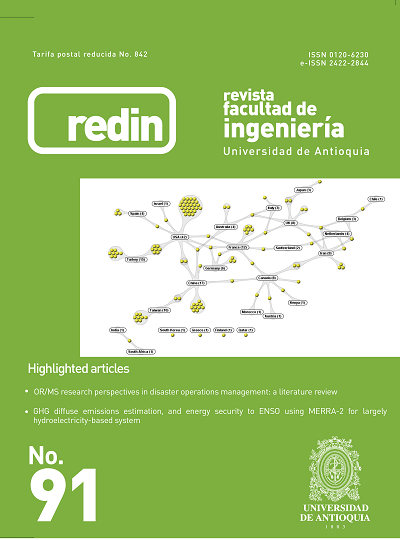Editorial
DOI:
https://doi.org/10.17533/udea.redin.n91a01Abstract
The enormous amount of scientific information along with the increasing dissemination of this material, the growing number of authors and researchers, the index and metrics of journals, articles, and researchers require appropriate literacy to identify the impact of the authors, editors, articles, and journals; this is an appropriate experience that allows evaluating such impact and drawing strategies that guide the scientific production. Therefore, this editorial report will attempt to provide a description of the main internationally recognized scientific information databases WoS and Scopus.
Downloads
References
P. Wouters. (2006) Aux origines de la scientome´trie: La naissance du science citation index. [Online]. Available: https://doi.org/10.3917/arss.164.0011
(2017) WOS Y SCOPUS: Los grandes aliados de todo investigador. Comunicar. Accessed May. 10, 2019. [Online]. Available: https://bit.ly/30MtA0I
E. Archambault, E. Vignola, G. Côté, V. Larivière, and Y. Gingrasb, “Benchmarking scientific output in the social sciences and humanities: The limits of existing databases,” Scientometrics, vol. 68, no. 3, pp. 329–342, Sep. 2006.
P. Mongeon and A. Paul, “The journal coverage of web of science and scopus: a comparative analysis,” Scientometrics, vol. 106, no. 1, pp. 213–228, Jan. 2016.
Published
How to Cite
Issue
Section
License
Copyright (c) 2019 Revista Facultad de Ingeniería Universidad de Antioquia

This work is licensed under a Creative Commons Attribution-NonCommercial-ShareAlike 4.0 International License.
Revista Facultad de Ingeniería, Universidad de Antioquia is licensed under the Creative Commons Attribution BY-NC-SA 4.0 license. https://creativecommons.org/licenses/by-nc-sa/4.0/deed.en
You are free to:
Share — copy and redistribute the material in any medium or format
Adapt — remix, transform, and build upon the material
Under the following terms:
Attribution — You must give appropriate credit, provide a link to the license, and indicate if changes were made. You may do so in any reasonable manner, but not in any way that suggests the licensor endorses you or your use.
NonCommercial — You may not use the material for commercial purposes.
ShareAlike — If you remix, transform, or build upon the material, you must distribute your contributions under the same license as the original.
The material published in the journal can be distributed, copied and exhibited by third parties if the respective credits are given to the journal. No commercial benefit can be obtained and derivative works must be under the same license terms as the original work.










 Twitter
Twitter